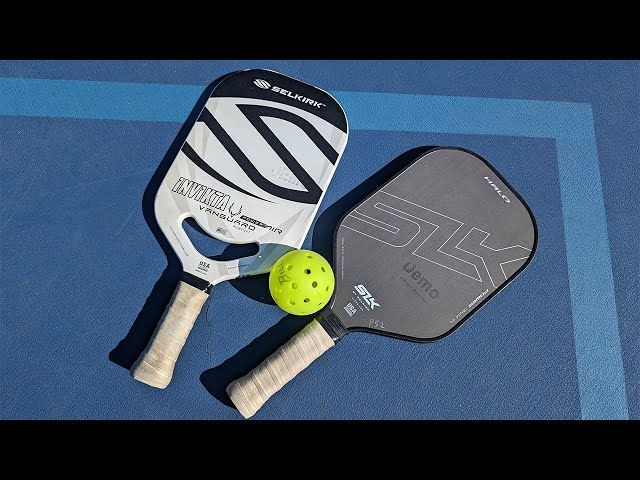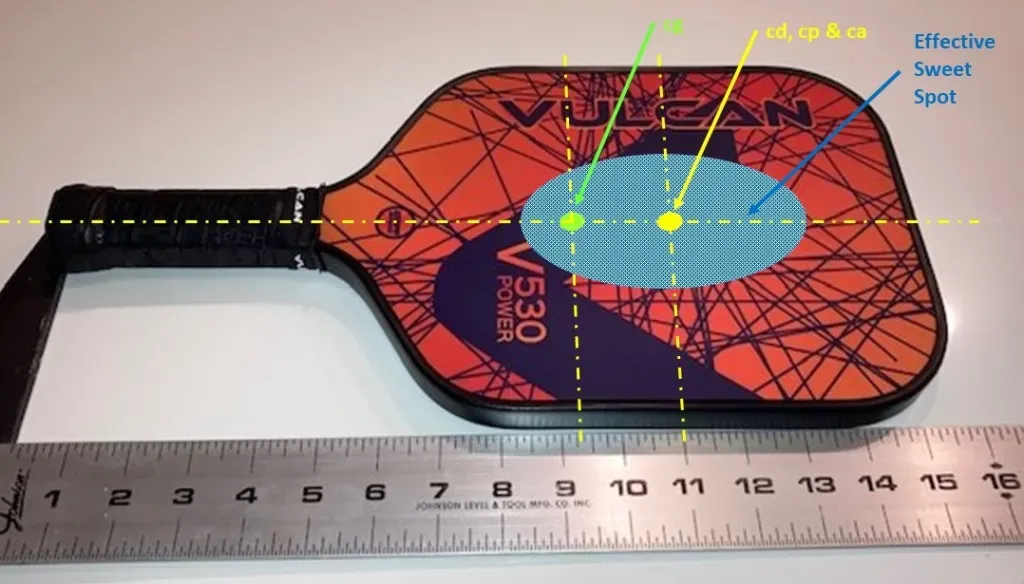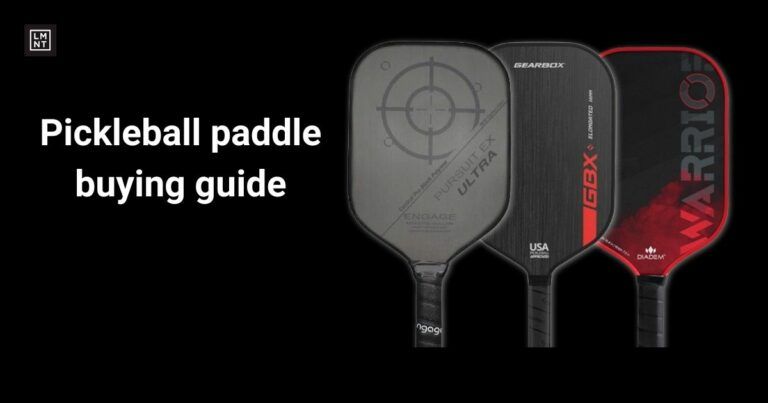Understanding pickleball paddle weight
The pickleball paddle weight is not just a number; it plays a significant role in your overall playing experience. Paddle weight can fall into several classes, making it essential to understand the various classifications to make an informed choice. The raw weight of the paddle is its total weight without any additional features, while swing weight refers to the perception of weight during a player's swing, influenced by balance and distribution. Thus, it’s not about merely hefting a paddle to gauge its weight; it's also about how that weight feels when in action.
The distinction between raw weight and swing weight can be illustrated this way: Think of a hammer versus a feather. The hammer is heavy, but it feels different when you swing it compared to the light feather. Likewise, a paddle’s weight is experienced differently depending on how it is balanced. For example, a paddle that is heavier at the head may provide more power but is less maneuverable. Conversely, a paddle with more weight in the handle can be easier to control, lending itself to finesse shots.

Weight classes
The realm of pickleball paddle weight classes can be summed up into three main categories:
- Lightweight paddles: weighing in at 6 to 7.4 ounces, they are agile and promote fast reactions.
- Midweight paddles: falling between 7.5 to 8.4 ounces, they offer balance, combining control with a touch of power for the versatile player.
- Heavyweight paddles: generally over 8.5 ounces, these paddles bring the thunder, offering significant power but requiring strength and stamina to wield effectively.
Manufacturers may introduce subcategories such as light-midweight and mid-heavyweight to refine your options even further, as slight variations in weight can lead to differences in performance, feeling, and comfort. Keep in mind that slight discrepancies often as minimal as 0.1 ounce typically bear little consequence on your gameplay.
How paddle weight impacts your game
Paddle weight can make or break your gameplay experience. It profoundly affects power, control, and even how effectively you can execute certain shots. The dynamics of your swings, dinks, and volleys all hinge on the weight of your paddle. While a heavier paddle can enhance your power, it often does at the cost of quickness.

Power and control
It’s akin to a well-tuned sports car: heavy enough to deliver power but nimble enough to navigate the curves. Heavier paddles provide a solid punch, generating more force when striking the ball, making them perfect for powerful shots, especially during drives. However, they can often feel clunky, leading to a disadvantage for players who rely on swift movements or finesse in their gameplay.
On the flip side, lighter paddles allow for quicker reaction times, better suited for dinks and volleys at the net. This extra speed can make all the difference in a fast-paced game. However, the trade-off is a potential lack of power, which can require players to exert more effort to drive the ball with significant force. Ultimately, the choice lies in your playing style. Are you a power hitter, or do you favor strategic placement?
Sweet spot
Now, let’s discuss a critical but often overlooked aspect: the sweet spot. This is the area on the paddle's surface that offers optimal contact with the ball, maximizing shot quality and minimizing mishits. The size and location of the sweet spot can vary with weight distribution.
Heavier paddles may support a larger sweet spot but can make it more challenging to pinpoint consistently. Conversely, lighter paddles may provide more tactile feedback but have a smaller sweet spot, requiring precision in your swings to hit accurately and consistently. The connection between sweet spot size and player performance cannot be understated, as hitting consistently within this area facilitates improved accuracy and control.

Choosing the right pickleball paddle weight for you
Choosing the right paddle weight hinges upon several factors, including skill level, playing style, and game format. Each individual player’s needs can differ dramatically based on their preferences and physical capabilities, making it essential to consider these criteria thoroughly.

Skill level
For beginners, lighter or midweight paddles typically offer better control and maneuverability. These paddles are forgiving, allowing new players to develop their skills without the strain that heavier options can impose. As players gain experience and confidence, they might consider transitioning to midweight or even heavyweight paddles in search of increased power and enhancement of their offense.
Intermediate and advanced players often find that their preferences shift as they develop their unique styles. A midweight paddle serves as a solid starting point, balancing power and agility. Over time, players might discover they prefer a lighter paddle for enhanced finesse or transition to heavyweights to deliver powerful shots under stress.
Playing style
Identifying your playing style can have profound implications on your choice of paddle weight. If you’re a power hitter, wielding a heavier paddle could amplify your strength. The added mass can translate into more driving force behind your shots, maintaining a strong presence on the court.
Conversely, finesse players who focus on control and precise placements might find lighter paddles more compatible with their approach. Players in this category often excel at delicate shots that require touch, employing their paddles to create hits that leave opponents scrambling.
Finally, if you find yourself an all-around player, a midweight paddle generally provides a well-structured blend of power and control, allowing you to adapt your game accordingly. It gives you the flexibility to play aggressively or defensively depending on the evolving dynamics of the match.
Game format
Game format also influences selection. In singles matches, a heavier paddle can aid in delivering powerful shots and put the opponent under pressure. However, for doubles play, where quick reactions and agility at the net are paramount, lighter paddles lend themselves more effectively, ensuring that players can react and position themselves swiftly. Understanding these distinctions allows players to adapt their choices based on who they’re playing with and against.
Physical considerations and paddle weight
Every player has unique physical considerations to account for when selecting a paddle weight. Understanding your body's strengths and limitations is critical to making a suitable choice that enhances gameplay while preventing injury.
Arm strength and endurance
It is important to recognize that heavier paddles require increased arm strength and stamina to wield effectively. For players without the upper body strength to maintain fluid swings, fatigue can set in quickly, hampering performance. On the other hand, lighter paddles might lead to wrist and elbow strain due to lesser shock absorption, particularly in prolonged matches where fatiguing motions lead to repetitive stress on the joints.
Thus, understanding your physical capabilities is paramount. If you often find your arm tired by the end of a game, reconsidering the weight of your paddle may be prudent. Striking the right balance between comfort and performance can significantly enhance your experience on the court.
Tennis elbow
The connection between pickleball paddle weight and injury prevention is particularly noteworthy. For those with conditions like tennis elbow, the added weight of a heavier paddle can compound existing issues. However, some players report benefits from the stability provided by a heavier paddle, arguing that they can execute less jarring shots.
Preventive measures, including proper warm-ups and stretches, can reduce the likelihood of injury. Exploring paddle options and consulting with a medical professional when experiencing discomfort is essential. The pursuit of enjoyment and improvement in your game should never come at the cost of health.
Other injuries
In addition to tennis elbow, various other injuries can be exacerbated by paddle weight, such as wrist, shoulder, and back pain. Paying attention to these concerns and how different paddles feel during play can only enhance one’s overall performance. Again, if discomfort arises, consulting with a healthcare provider is vital; they can help tailor a plan that suits both your physical capabilities and your search for improvement in pickleball.
Weight and your pickleball background
Understanding your background in other racquet sports can also guide your choice of paddle weight. The transition between sports isn’t always seamless, as each sport varies in dynamics, strategies, and techniques.
Tennis players
Many tennis players transitioning to pickleball often find midweight paddles comfortable due to their accustomed strength in handling heavier rackets. The adjustment often feels seamless, allowing former tennis players to leverage their skills in pickleball effectively. However, light-paddle advocates may find themselves gravitating toward minimalist lightweight options when entering the sport.
Table tennis and racquetball players
For those hailing from backgrounds like table tennis or racquetball, lighter paddles can be a preferred choice. These sports emphasize speed and finesse, often utilizing wrist-driven shots that align perfectly with a lightweight paddle’s agility. Adapting quickly to the movement dynamics of pickleball, players from these backgrounds may favor the responsiveness that lighter weights afford.
Customizing your pickleball paddle weight
As you become increasingly immersed in the world of pickleball, customizing your paddle can lead to even greater enjoyment and performance. Adjusting weight and balance using simple methods can make a significant difference.
Lead tape
Lead tape serves as an effective way to customize both the weight and balance of your paddle. Applying lead tape can enhance overall paddle efficiency, often allowing for adjustments to swing weight as desired. Key considerations include positioning the tape on different areas of the paddle, depending on whether you wish to create a head-heavy or handle-heavy feel.
Most players opt for subtle amounts of tape, as too much can lead to unwieldy increases in weight. Visual aids can be beneficial for players needing guidance on proper placement for the desired effect.
Other methods
In addition to lead tape, players can explore other customization methods, including using tungsten tape for more precise weight adjustments. Electrical tape can also be an affordable solution for minor alterations. Additionally, experimenting with different grip thicknesses can modify the overall paddle weight, affecting how it feels during play. These customization opportunities allow players to tailor their experience to their preferences, enhancing comfort and individual style.
Advanced considerations: weight ranges and guarantees
As you explore pickleball paddle weight options, understanding manufacturing practices is critical for making informed decisions. Variations in weight can stem from manufacturing inconsistencies, and players should recognize how these slight differences might affect their game.
Understanding weight ranges
The pickleball paddle weight range is typically dictated by the materials used and the specific manufacturing process. Most paddles will come with weight ranges intended for the average player. The small variations (e.g., a difference of 0.1 ounce) can often be likened to the weight of a penny almost negligible but not entirely inconsequential. Understanding how some professional players prioritize other factors over exact weight can serve to debunk myths surrounding the necessity of precise weight adherence.
Guaranteed weight ranges
Finally, for those more advanced players seeking guaranteed weight ranges, certain brands might provide paddles with specified weight limits. While this option allows for greater precision, it's important to keep in mind how grip choices can affect the overall weight you experience during play. Exploring options that cater to your needs while understanding the slight inconveniences of customizability can provide clarity when making your choice.
Finding your ideal paddle weight: testing and experimentation
The path toward finding your perfect paddle weight does not end with reading experimentation is key. Engaging first-hand with various weights can yield tremendous benefits in your decision-making process.
Try before you buy
One of the most effective ways to discover what works best is to try before you buy. Borrowing paddles from friends or participating in local demos allows players to feel the differences between options without commitment. Acknowledge that personal preferences evolve; the more you play with different paddles, the more clarity you’ll gain regarding what suits your style.
Starting point recommendations
Starting with a midweight paddle can serve as an excellent baseline for comparison. Many players discover that their ideal weight can shift over time as they grow in strength, technique, and overall game strategy. Understanding that adaptation is part of the journey allows players to remain flexible in their approach and keeps the joy of the game alive.
Paddle weight and performance evolution
As your game progresses, it’s vital to reassess your requirements regarding paddle weight. Just as an athlete lifts heavier weights to build strength, the dynamics of your paddle choice may shift based on your skills and objectives.
Re-evaluating your needs
Players often experience shifts in what they deem suitable for their growth. Skill development can lead to changing preferences, sometimes prompting a transition to a different weight class due to evolving capabilities or desired enhancements in gameplay. Awareness of when to re-evaluate your choice of pickleball paddle weight can be the key to unlocking new levels of performance.
Conclusion: elevate your game with the perfect paddle weight
Choosing the right weight for your pickleball paddle is no mere detail; it is a fundamental aspect of your playing experience that can elevate your game significantly. By taking into account factors such as skill level, playing style, and the game’s demands, you can navigate through the myriad of options available. Remember, your paddle should feel like an extension of yourself on the court, promoting confidence and control as you engage with others in friendly competitions or serious matches.
Encouraging experimentation and open-mindedness will undeniably help you find your perfect match, igniting a passion that can only be fueled by improved performance and enjoyment. As you continue to explore the nuances of paddle weight, let it guide you toward becoming the best player you can be, fostering a love of the game that will resonate for years to come.










